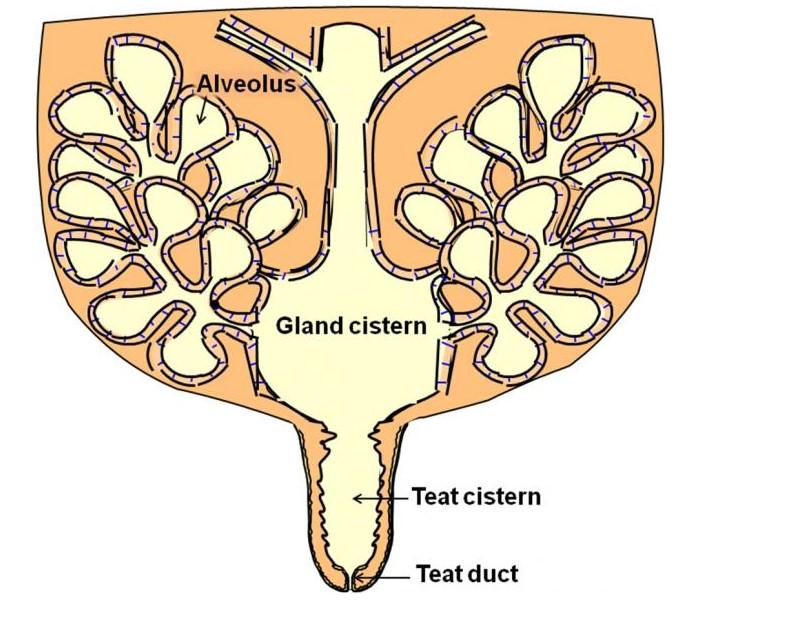Pre-Milking Cow Prep Influences Somatic Cell Count
Pre-Milking Cow Prep Influences Somatic Cell Count
When it comes to maintaining a low herd somatic cell count, continuously practicing sound milking procedures are part of an effectively implemented, on-farm milk quality plan. Dairy managers understand the importance of following proven milking procedures, but the component that often gets overlooked is translating the importance of continuously and consistently completing these practices to those actually milking the cows. When these procedures are routinely reviewed or re-reviewed with employees or other family members, an increased understanding can lead to a higher rate of correctly implementing these practices, avoiding the development of bad habits, and the ability to maintain a low somatic cell count. Even herds using robots to milk their cows need to review whether the robot is correctly completing each of these components associated with pre-milking prep.
“Clean” Environment Reduces Exposure to Mastitis-Causing Bacteria
Providing a comfortable, dry environment for cows to rest reduces the exposure of teat ends to mastitis-causing bacteria. A cow’s udder should be clean and not manure-laden. Not only does this reduce mastitis, but total milking time is improved as one does not need excessive time to clean cows before attaching the milking unit. For freestall barns, this means cleaning out the manure at the back of stalls at each milking and replacing bedding as needed to keep udders clean and dry. For compost bedded barns, the bedding surface needs to remain dry. Thus, the bedding area needs to be tilled twice daily and new sawdust added when the moisture content exceeds 40 to 60%. On pastures, muddy areas and congregation around trees needs to be kept to a minimum.

Teat Disinfectant (Pre-dip) Needs Time to Work
Effectively applying pre-dip helps in the control of environmental pathogens that may cause mastitis. Pre-dip needs to be applied to all 4 teats with at least the lower ¾ of the teat being completely covered. The germicide found within the pre-dip needs to remain on the clean-looking teat for at least 30 seconds to be effective. Please remember that the germicide is not effective on “dirty” teats which are manure-or mud-laden. After applying pre-dip and allowing it to remain on the teats for at least 30 seconds, the pre-dip needs to be removed using a single service paper towel or washed cloth. Special attention should be directed towards cleaning the teat ends.
Adequate Prep Needed for Milk Let-down
For efficient milk let-down, the milking unit should be attached within 1 to 2 minutes of the start of prepping the cow for milking. Within 30 seconds of touching and/or cleaning the teats, oxytocin is released into the blood stream, which in turn results in milk flowing from the cells that synthesize milk, known as alveoli, into the ducts and cisterns of the mammary gland. Less than 20% of the total milk production is stored in the gland and teat cisterns and, thus, the majority must be “released” from the alveoli cells. For efficient oxytocin release, cows must not be frightened during the milking process and a repeatable milking procedure needs to be followed with the milking units attached within 2 minutes of the start of prepping the cow. Attaching the milking units too soon or too late will result in a delay in milk let-down and possible damage to the teat ends by the milking machine.
Fore-stripping Cows Helps with Milk Let-down
Stripping a few streams of milk prior to attaching the milking unit serves a multitude of purposes. First, fore-stripping stimulates milk let-down and flushes bacteria from the teat canal. Secondly, milk which is discolored, watery, or contains flakes or clots can be detected and diverted from saleable milk. Then, an action plan for the cow can be developed to address the issue. Fore-stripping can occur before or after pre-dip is applied.
Sound and consistent milking practices are important components in achieving a low herd somatic cell count. These milking practices include, but are not limited to, providing an environment where cows stay clean, using an effective pre-dip to help in the control of environmental mastitis, attaching the milking unit within 2 minutes from the start of cow prep, and fore-stripping cows. Routinely reviewing these practices with those actually milking the cows is important for effective milk let-down, efficient milking times, and maintaining lower somatic cell counts in milk.
Author: Donna M. Amaral-Phillips
